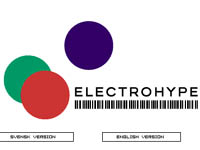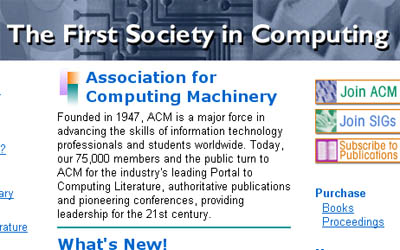|
[August 19th 2004]

5 Faves - picked by Mogens Jacobsen
Granted, surfing the net for nice new stuff can
be quite time consuming - and often you come across the good stuff
by chance.We asked a number of Nordic artist to help us surf by
telling us their five favorite picks. The assignment was quite open
- it could be current hits as well as all time greatests. Danish
artist Mogens Jacobsen (b. 1959) chose a quite different
- not less interesting - route. Enjoy the read.
My five favorite pieces of net-art? It's like if somebody asked
me about my preferred color (I have none) or my favorite band (a
brief look on my CD collection tells me I must have approx. 400
favorite bands).
Instead of singling out 5 works, I will extend the category to include
software- and net-art related sites and my personal resource sites.
And instead of writing 5 lines to 5 works, I will write a lot of
lines on fewer sites.
But let me start with one true piece of net-art: The Persistent
Data Confidante by Paul Vanouse. It's truly one of my personal all-time
greatest (It's ancient - from '97). It's a hugely overlooked masterpiece
touching a lot of internet issues: The secret dark side of humankind,
privacy/anonymity, and visitor based content. The piece is a site
where visitors can trade secrets. You tell a personal secret - and
you will be told somebody else's secret, which you then rate. The
piece even involves techniques that became "hip" years
later in software art: Rating the secrets feed an evolution of secrets
- the best (or darkest?) is mixed by an crossover algorithm and
put into the pool of secrets. And you will never know if the secret
you have been told was written by a human or constructed by the
machine. Genetic algorithms in a web piece from 1997!
http://www.textgenomics.com/

From Text Genomics
I once blamed Macromedia Flash for all thing evil on the net (you
will find the interview somewhere on this site). I still think
the products from Microsoft/Apple/Macromedia/Adobe (you pick the
name) is seducing the artists. I hope artists will dig deeper than
the smooth surface of multimedia and start using more low-level
tools. Of course this often requires investing time in learning
a programming language. But suddenly the learning curve became a
lot less steep in 2002, when Casey Reas and Benjamin Fry introduced
the programming language "Processing". It's sort of easy
Java programming for artists. It's free and it runs on Windows,
Mac OSX and Linux. Download it and do some great stuff by yourself.
www.processing.org
Now thing gets difficult: I ought to tell you about some of the
organizations working hard to support and document electronic art.
This category would include Electrohype (www.electrohype.org)
in Sweden (guys, I wish you were Danish), Rhizome (www.rhizome.org)
in New York, the software art repository of RUN_ME (www.runme.org),
or the DAM in Berlin (www.dam.org)
for making the history of digital art accessible. But I won't -
check out the URLs yourself.




Instead let me be a little more nerdish. At the moment, I tend
to use the net a lot to gain inspiration by accessing theory, writing
and research about software, humans and computers. If you can afford
it, the digital library of the Association for Computing Machinery
(www.acm.org) is
an excellent place to read about the thoughts behind our current
way to work with computers. Or you could surf around the old homepage
of Aesthetics + Computation group at the MIT media laboratory (http://acg.media.mit.edu).
Here you would stumble upon a lot of theses for download as PDF
- some of them boring, most of them interesting and a few of them
brilliant.

From Association for Computing Machinery
Check out Mogens' own works at http://www.artnode.org
|